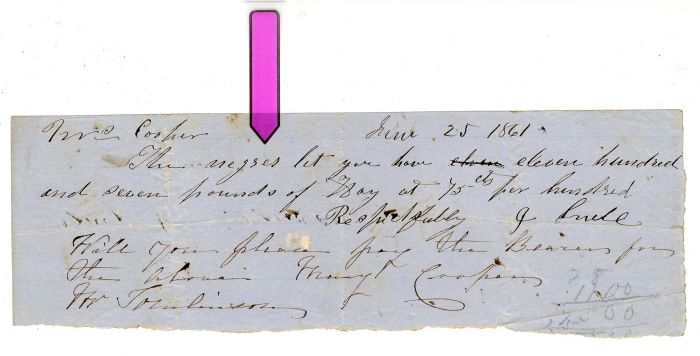1861 - Slavery Document
Inv# AM1735
Document regarding negroes. Measures 7 3/4" x 2 1/2".
Slavery and enslavement are both the state and the condition of being a slave, who is someone forbidden to quit their service for another person (an enslaver) who treats that slave as their property. Slavery typically involves the enslaved person being made to perform some form of work while also having their location dictated by the enslaver. Historically, when people were enslaved, it was often because they were indebted, or broke the law, or suffered a military defeat. The duration of their enslavement might be for life, or for a fixed period of time after which their freedom was granted. Individuals, then, usually became slaves involuntarily, due to force or coercion, although there was also voluntary slavery to pay a debt or obtain money for some purpose. In the course of human history, slavery was a typical feature of civilization, and legal in most societies, but it is now outlawed in all countries of the world, except as punishment for crime.
In chattel slavery, the enslaved person is legally rendered the personal property (chattel) of the slave owner. In economics, the term de facto slavery describes the conditions of unfree labour and forced labour that most slaves endure.
In 2019, approximately 40 million people, of whom 26 percent were children, were enslaved throughout the world despite its being illegal. In the modern world, more than 50 percent of enslaved people provide forced labour, usually in the factories and sweatshops of the private sector of a country's economy. In industrialised countries, human trafficking is a modern variety of slavery; in non-industrialised countries, enslavement by debt bondage is a common form of enslaving a person, such as captive domestic servants, forced marriage, and child soldiers.










Ebay ID: labarre_galleries